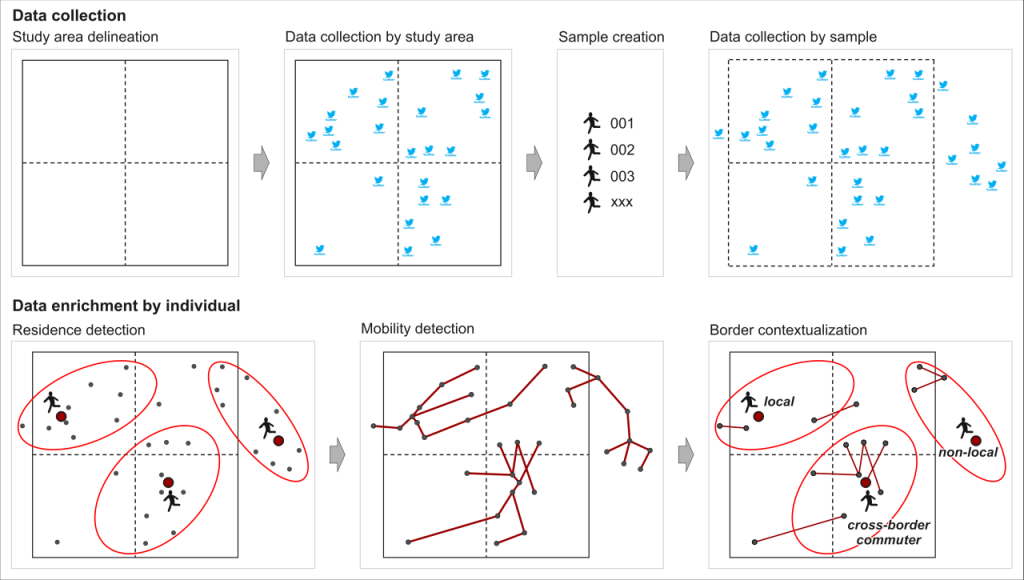One of the goals of the BORDERSPACE project at the Digital Geography Lab is to examine whether and how social media data such as geo-located Twitter data can reveal cross-border mobility of people and provide new insights for understanding border regions. We demonstrate the feasibility of using Twitter data in two different recently published studies – the first study from the Greater Region of Luxembourg and the second study from the Nordic countries.
Study #1: “Revealing mobilities of people to understand cross-border regions: insights from Luxembourg using social media data”
Published in European Planning Studies
Authors: Olle Järv, Håvard W. Aagesen, Tuomas Väisänen & Samuli Massinen
Conceptually, our approach was to make big data small and meaningful by: 1) using a bottom-up concept of activity space (e.g. Järv et al., 2014); 2) using mobility as a tool to capture individual activity spaces; and 3) contextualizing mobility from the border perspective.

Continue reading “Two new studies on revealing cross-border mobility and border regions”
